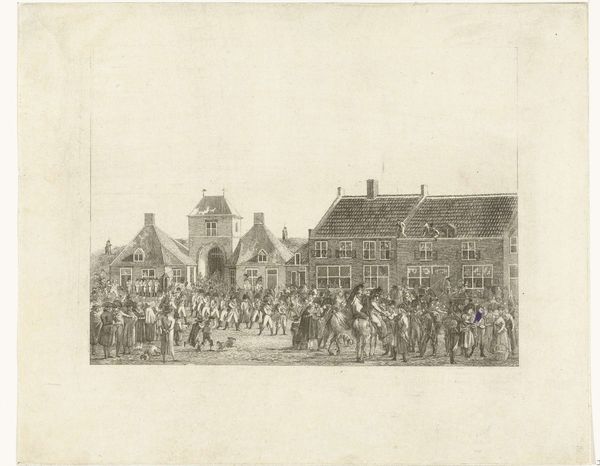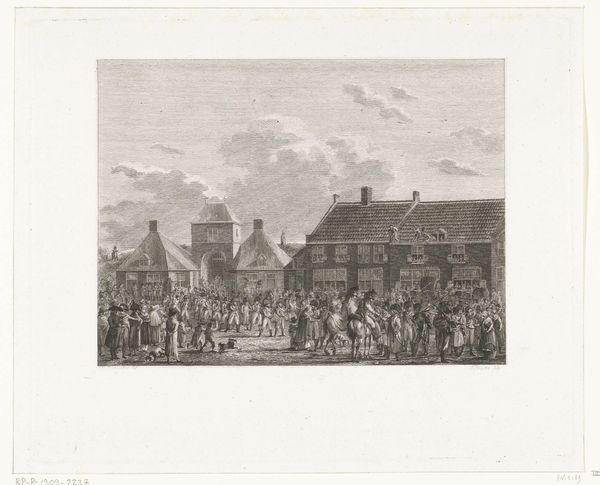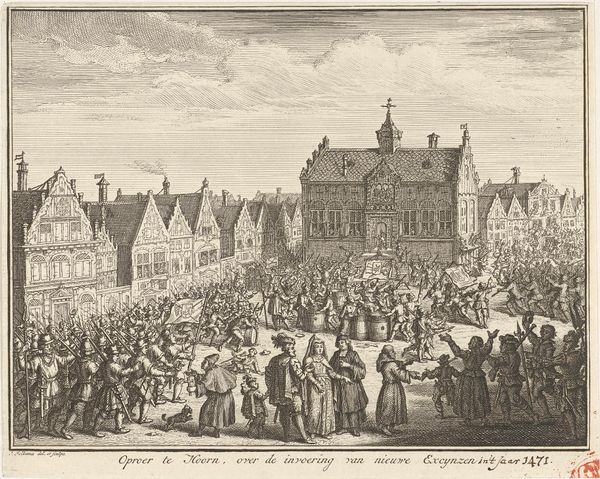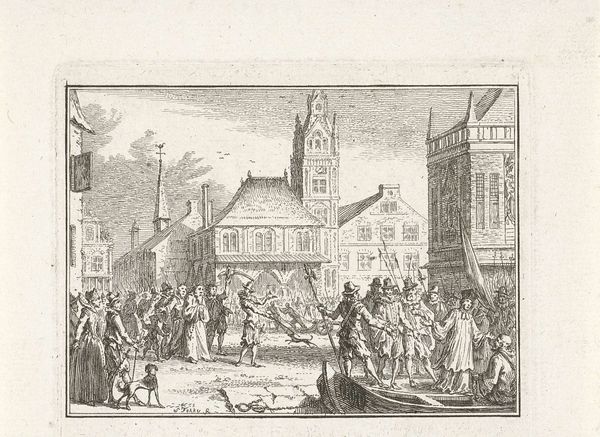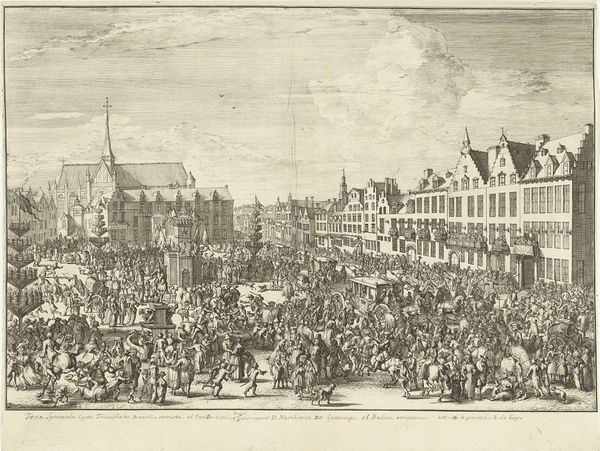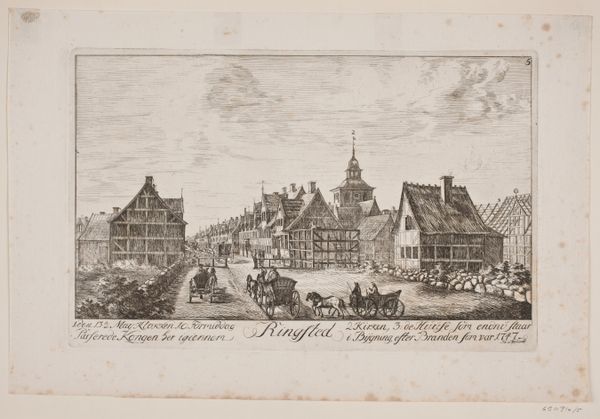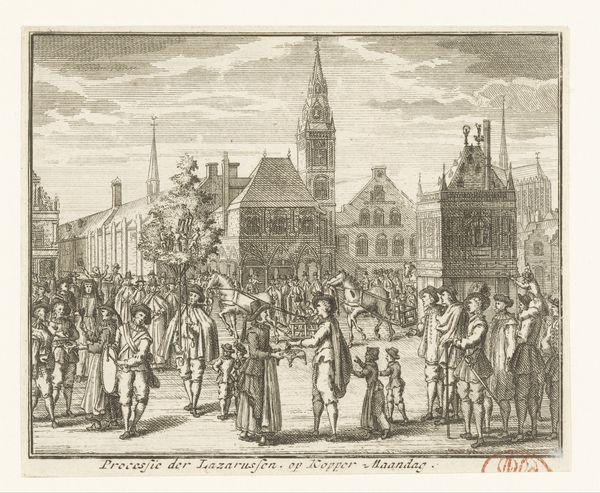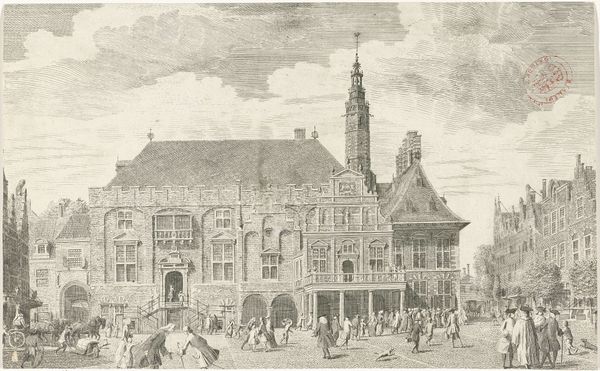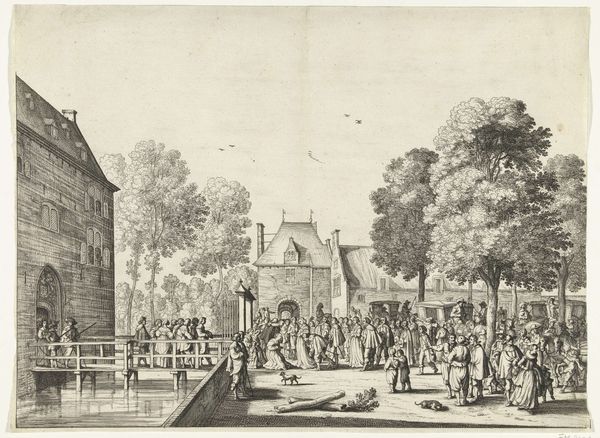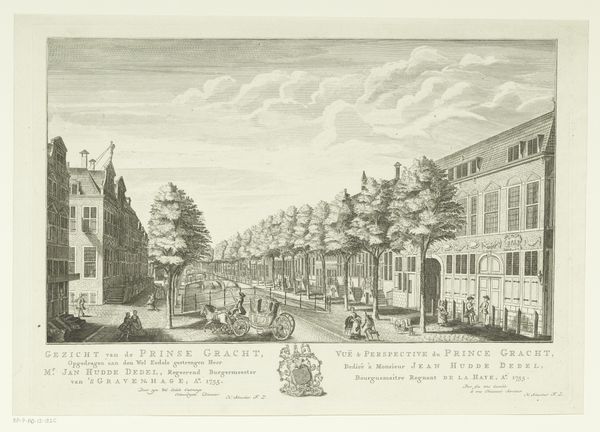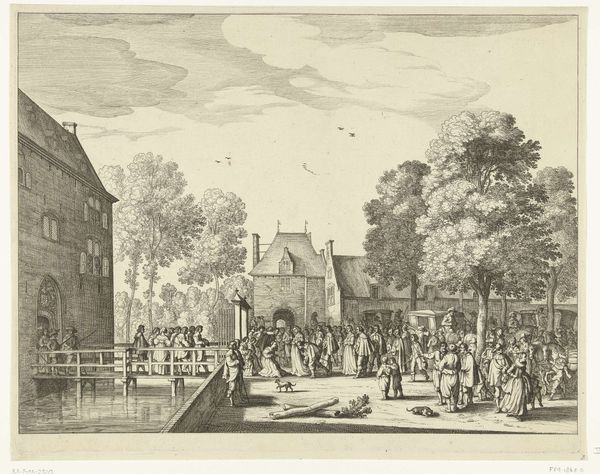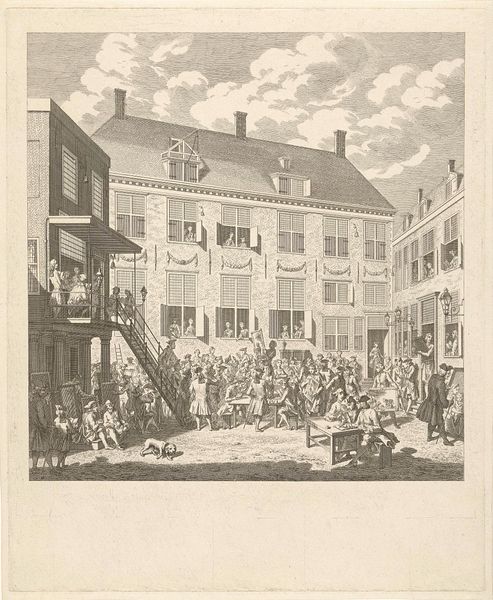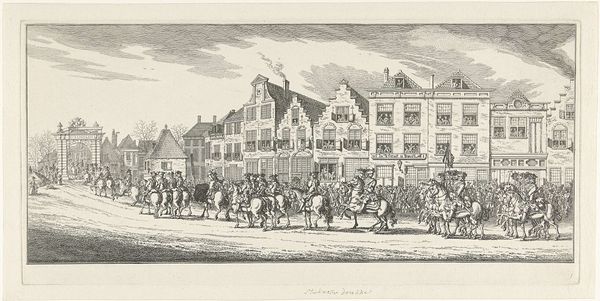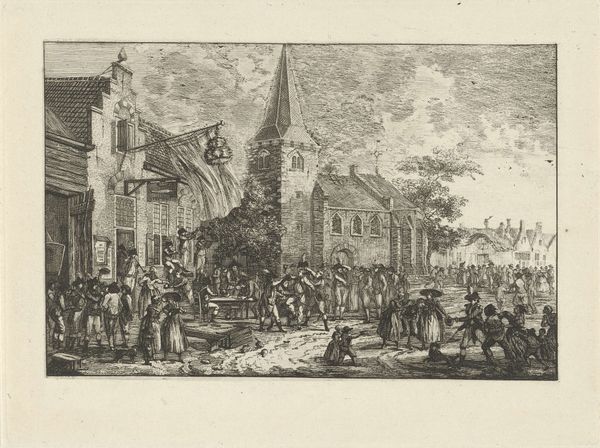
Dimensions: height 155 mm, width 208 mm
Copyright: Rijks Museum: Open Domain
Curator: What a fascinating print! This is "Franse troepen trekken Breda binnen, 1793," which translates to "French Troops Enter Breda, 1793." It's an engraving made sometime between 1800 and 1841 by Joannes Bemme and resides here at the Rijksmuseum. Editor: The scene feels meticulously observed, yet detached. There's a certain romantic drama inherent in the event depicted, of course, but the grey scale lends an interesting somber feeling to the scene. And is that somebody sitting on a rooftop over there? Curator: That somber quality, I think, underscores the changing social and political dynamics of the era. Consider how printmaking itself democratized images. These prints circulated widely, shaping public opinion about the French occupation. The detailed work, though small, played a huge role in the Dutch national identity at the time. Editor: It's interesting you bring up technique. Looking closely, the crisp lines of the figures, the meticulous shading on the buildings--there is craft on display here! You can almost feel the pressure of the burin on the copper plate and the repetitive motions required to create this image for mass consumption. It challenges the conventional art narrative that only painted works possess higher value. Curator: Precisely! And Breda itself becomes a character in the story. The cityscape isn't just a backdrop; it is the place of contestation, representative of Dutch resilience. People looking from their windows, or standing along the road as if posing for a photograph... I also find compelling what Bemme leaves out: the real experiences of local population or soldiers' brutality for example. The French occupation undoubtedly affected everyone's life; in truth we see very little that can hint to what life must have really looked like here at this precise moment. Editor: You make a salient point on Dutch resilience! Viewing those figures crowded within the square, and how they're being looked down on by those spectators on top of the building, the entire image embodies the socio-historical setting. It represents consumption not just of art, but power. What an evocative detail about who consumes the imagery—those seeing it from windows may be more directly benefiting from French power than the townspeople. Curator: Indeed. This piece encourages us to consider how historical events are mediated and consumed by the public, and to examine critically the ways in which power is visually constructed. Editor: Absolutely, a reminder that the impact of images extends far beyond the aesthetic— shaping identities, reflecting historical conditions, and sometimes justifying political narratives, especially in print form.
Comments
No comments
Be the first to comment and join the conversation on the ultimate creative platform.
